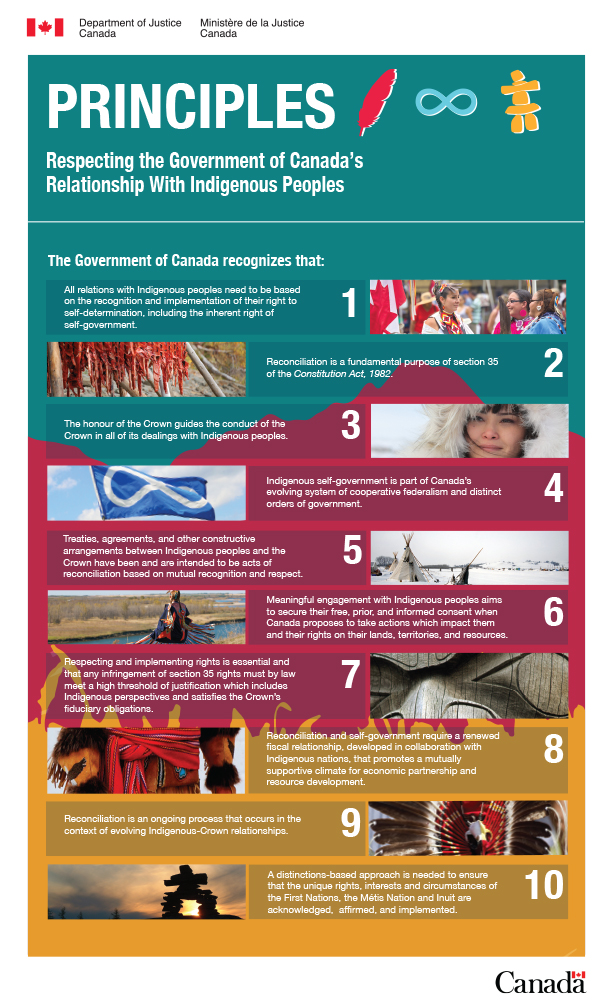
“Article 3. Indigenous peoples have the right of self-determination. By virtue of that right they freely determine their political status and freely pursue their economic, social and cultural development.”
United Nations Declaration on the Rights of Indigenous Peoples
Indigenous Self-Determination
Indigenous self-determination can be described as First Nations, Metis and Inuit people reclaiming an individual and collective autonomy of self: that Indigenous people will decide what is best for themselves outside of the colonial system they have been forced to operate in for centuries.
This means that the 634 First Nation communities and its members, the 53 Inuit communities that exist across the far north, and those belonging to Metis organizations, will pursue and shape their own governing bodies, policies, economies, education, and control of traditional territories. All of which have been affected by the creation and implementation of reserves, residential schools, and the Indian Act.
In addition to section 35 of the Constitution Act of 1985 which lists ten principles that the government of Canada is committed to, Canada is also bound by international law, and is obligated to ensure that Indigenous self-determination is supported and encouraged by the Crown.
Article 3 of the United Nations Declaration on the Rights of Indigenous Peoples (UNDRIP) states, “Indigenous peoples have the right of self-determination. By virtue of that right they freely determine their political status and freely pursue their economic, social and cultural development.”
Article 4 of UNDRIP, states “Indigenous peoples, in exercising their right to self-determination, have the right to autonomy or self-government in matters relating to their internal and local affairs, as well as ways and means for financing their autonomous functions.”
Despite the appearance that Canada upholds Indigenous self-determination, there are many significant and harmful ways in which the government continues to violate its own laws and promises. From crown-controlled funding to land seizures, from breaking Treaty obligations to purposely excluding or replacing language within documents in its own favour, the government generates ongoing impediments to Indigenous self-determination.


Reconciliation Today
Canadians can support Indigenous self-determination within their own areas of influence. This includes but is not limited to, municipal and local organizations and businesses, workplaces and educational institutions.
This requires Canadians to insist that conversations and decisions concerning policies, land use and community engagement include Indigenous community members’ knowledge, wisdom, and guidance. In collaboration with the Indigenous community, best practices can be established to achieve rich, inclusive, and safeguarded outcomes.
Further, Canadians can help to ensure that Indigenous voices are present at provincial and federal levels, too. The commitment to Indigenous self-determination as a non-Indigenous person is an act of reconciliation that supports the Truth and Reconciliation Commission’s Call to Action 45 – 47. These Calls to Action demand that the government repudiate the Doctrine of Discovery, affirm nation-to-nation relationship between Indigenous people and the Crown, respect signed Treaties, and more.
See how True North Aid is supporting Self-Determination efforts in Canada by clicking here.






